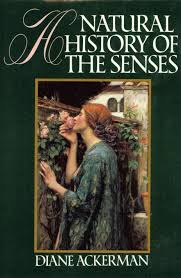Resurrection of a new age!!
Assalamu Alaikum dear reader friends..!!
And my dear students!!
At last.. Alhamdulillah.. I’m back… I’m back… I’m baaaacckkk!!!!
Today I’ve come here with an intention to discuss about the “Roaring Twenties” which was a landmark of modernism in the history of America. The 1920’s and 1930’s were characterized by various movements, wars, and rebellions which resulted in a sudden rise of knowledge and creativity.
Friends, do you not agree with me when I say that deep emotions and sufferings result in works of great aesthetic value?
Yes..!!
Similarly, today we are discussing such a period of modernity in America which shakes the very foundations of art and artistry in the history of America.
We can so relate to our contemporary times with this age of transition and Renaissance in America.
In American literature we call this the “Jazz Age”. The age was characterized by shifting dance and music styles. The ‘Jazz’ is a kind of music which is a combination of European and African styles. It was in popular culture throughout the early 20th century. Technological evolution of Radios had impacted the lifestyles so much that the youngsters were literally crazy about the Jazz.
In literature, F.Scott Fitzgerald had been credited for first using the term in his seminal work “Tales of the Jazz Age.” This was a period of economic prosperity in the major cities in the U.S. This period was sharply distinct from the earlier periods of modernity in American literature as it celeberated a spirit of novelty associated with modernity… A love for break from traditions! Alas.. Eventually, the Great Depression (worldwide economic depression during the 1930’s) gave way to the downfall of this era and its roaaarrrring!!!
On the contrary, there was an intellectual emergence seeing its dawn in the 1920’s called the 'Harlem Renaissance'. It was born in Harlem, Manhattan, New York city, and hence its name. It was also kown as the “New Negro Movement”. This movement was an expression or an uproar resulted by the Great Migration (also called ‘Black Migration’; caused by the suppression of the Black people in the southern states; Jim Crow Laws promoted racial discrimination; lynching/mob attacks on Blacks) of the African-Americans from the southern part of U.S. to the northern parts of the country.
Eventually, we can see the surge of knowledge and intellectual participation of the African-Americans gaining popularity during this age. In literature, Alain Locke’s “The New Negro” coined the name for this literal movement. The African-americans claimed active roles in the society by writing novels and participating in journalism. Literary, artistic, and sociological development saw its dawn in this age.
The impact of the Civil war (1861-1865) and the World wars (WW:I- 1914-1918; WW:II- 1939-1945) was very evident in this era. People had to struggle to strengthen the foundations of their identity. Any kind of subjugation or oppression was unaccepted by the spirit of this age. Revolt against the ferocity of inhumanity and inequality characterizes the age. People of colour had found prominence through their works of art and creativity!
Whereas the 'Lost Generation', in literature, were a group of expatriate (people living outside their native country) writers who identified themselves as ‘lost’ because of the loss of identity and the disparagement that was brought about by the calamities of war. They were directionless as they were wandering away from normalcy. There was no meaning or support to survive. The individuals born between 1883 and 1900 were said to belong to this generation and the writers who belong to this age are Gertrude Stein and Ernest Hemingway.
Dear readers, these were the times of great suffering and anxiety, which provoked an intellectual outcome and a spirit of freedom and enquiry in the hearts of young Americans and African-Americans. Hence, my dear readers and dear students it is our duty as scholars of literature to understand the importance of intellectual output in these tough times. We have been facing similar conditions in this COVID19 era as we have been subjected to pure misery and months of self-isolation.
Now..
Isn’t it time to wake up and revive..? Isn’t it time to resolve and reflect..? Isn’t it time to show the beasts, the inborn beauty in us..? Isn’t it time to awaken… and to create…??
Yessss.. my dear students.. and reader friends… let’s not be engulfed by this ongoing crisis, but evolve and succeed!!!
Take your pens… etch your thoughts… It’s not time to sit and be sterile… but to produce and proceed!!! Let us be the rhizomes of ‘Coronaissance!!’ (Corona+Renaissance= Coronaissance: word coined by.. by.. by… yes.. by me!!!)
Well… thinking of beasts and beauties… plight and pain…. Subjugators and sufferers… I’m reminded of a very famous poem by “La Fontaine”- The Wolf and the Lamb..!!
Inquisitive to read it? Let me share with you Here, the link of this poem’s recitation by me… Listen.. and leave back your precious positive comments on this article as well as about my youtube video..
May the Almighty’s peace be upon you..
Stay safe! Stay sound!
Signing off..
With love,
Rasheeda Madani.



Dear Rasheeda ma'am,
ReplyDeleteSo happy to see you back to blogging!
Indeed, it's so heartwarming and inspiring as well, to see the spirit and the verve in your words and lines.
Thank you for the amazing insights into the “Roaring Twenties.”
I so agree with you on your thought that,
‘deep emotions and sufferings result in works of great aesthetic value!’
Indeed, the just-announced Nobel Laureate Louis Gluck and her intense work are best examples to this credo!
Thank you ma’am for the youtube link to the poem titled, “The Wolf and the Lamb” by La Fontaine.
It was added charm listening to the poem in your lovely voice.
Looking forward to more of such amazing intellectual treats from you, dear ma’am.
Warm regards,
Dr. Rufus